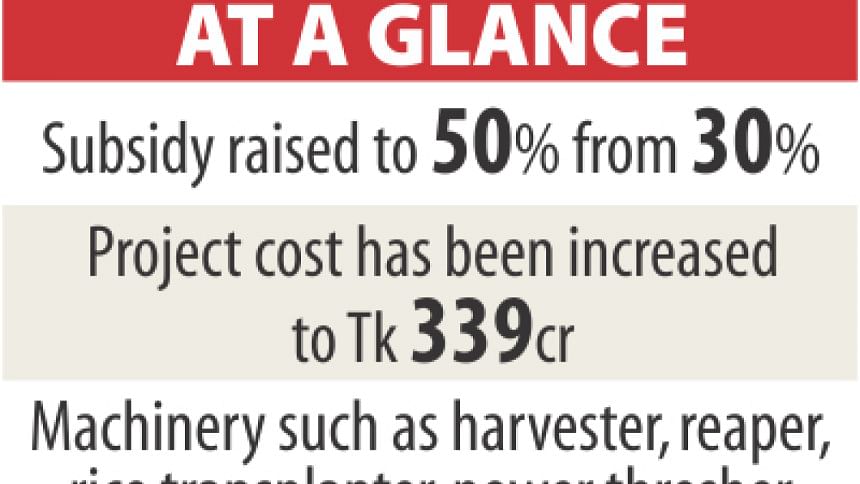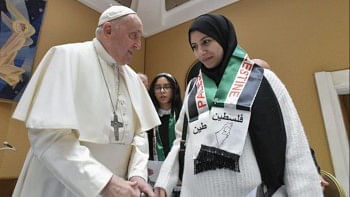Mechanised farming gets a boost

The government has raised the subsidy to farmers for purchase of agriculture machinery to 50 percent with a view to expanding mechanised seeding, transplanting and harvesting such that growers can produce more food at a reduced cost.
Previously, the farmers got subsidy of 30 percent.
The government also increased the ratio of subsidy to 70 percent for buying certain types of farm machines by farmers in haors and the southern coastal zones.
For that end, the Executive Committee of the National Economic Council last month raised the allocation by about 37 percent to Tk 339.44 crore.
“This will reduce the farmers' tension about getting adequate farm labourers during the time of harvest,” said Sheikh Md Nazimuddin, project director of the enhancement of crop production through farm mechanisation project phase II.
The project also aims to enhance cropping intensity and reduce post-harvest losses, according to the project proposal from the planning ministry.
Under the revised scheme, the government will provide combine harvester, reaper, rice transplanter, power thresher and seeder at half the prices to a select group of growers at the upazila level.
However, there will not be any price subsidy for buying tractors and power tillers under the revised scheme as the use of the machines is already prevalent in the fields, he said.
Currently, farmers till nearly 90 percent of the cultivable land by power tillers and tractors and irrigate over 90 percent of the cropland through power-operated pumps.
There have also been significant strides in threshing of grains by machines -- a transition that took place over the last two and a half decades in the face of rising shift of farm labourers to non-farm jobs and increased agricultural wages.
Farmers switched to farm machinery thanks to the expansion of rental services for tilling, irrigation and other farm operations by machines.
However, they still remain highly dependent on manual labour for seeding, transplanting and harvesting of their crops for the lack of availability of suitable machineries.
Farmers have to pay high wages to do the tasks on time.
Nazimuddin said nearly 1 percent of the crops might be harvested by using reapers or combine harvesters.
But the use of machines can reduce post-harvest losses, he said, citing that up to 15 percent of paddy is lost during the harvesting and post-harvesting phases.
The use of combine harvester can reduce the loss to 2-3 percent, he said, adding that there has been a rise in awareness about the use of machines for harvesting.
“This is an achievement,” he said.
The government in 2009 took up a Tk 150 crore scheme to speed up farm mechanisation by offering 25 percent subsidy for agricultural machineries such as power tillers, tractors, power threshers and combine harvesters, according to Nazimuddin.
Some Tk 163 crore was spent under the first phase, during which support was provided to farmers to buy 34,000 power tillers, 1,290 tractors, 1,840 threshers and 8 combine harvesters, he said. The government initiated the second phase of the project in July 2013 by allocating a further Tk 172 crore. In February 2015, it revised upwards the allocation and the ratio of subsidy to Tk 248 crore and 30 percent respectively.
So far, Tk 115 crore has been spent from the project, with which 11,000 power tillers, 1,200 power threshers, 500 reapers and 25 combine harvesters were purchased.
The hike in subsidy is necessary as the prices of the agricultural machineries are still high for growers, he said. For instance, a combine harvester costs Tk 7-10 lakh and a rice transplanter Tk 4 lakh.
The project, which is scheduled to end in June 2019, also aims to conduct two censuses on agricultural machinery, and construct a lab to test the quality of the agricultural machinery.
It is also expected to create facility for mechanic training, construct sheds for machines and procure 1,500 farm machineries to provide rental services, according to the proposal.

 For all latest news, follow The Daily Star's Google News channel.
For all latest news, follow The Daily Star's Google News channel. 



Comments